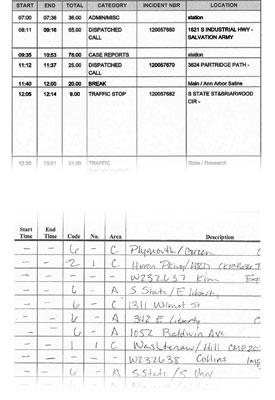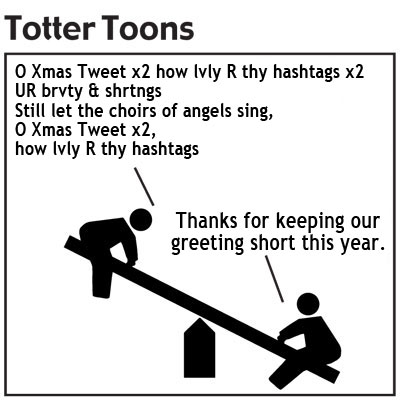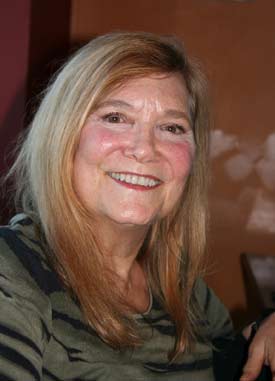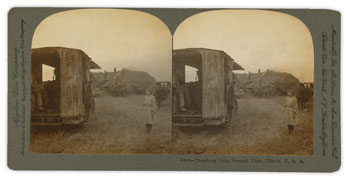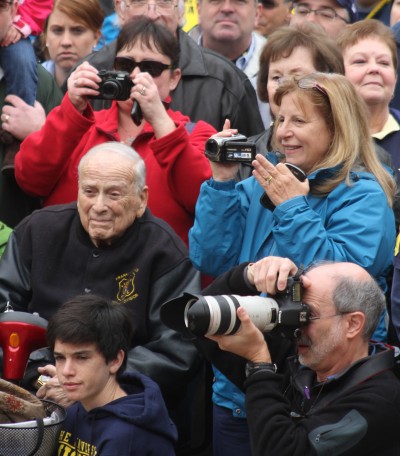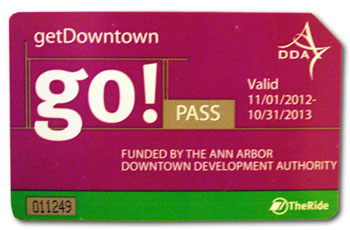Column: Reflections on Two Inaugurations
Editor’s note: Ann Arbor residents Laura Sky Brown and her son Henry attended the 2009 inauguration of President Barack Obama. This year they returned to the nation’s capital, and filed periodic updates for The Chronicle along the way. This column contains their reflections on those trips, beginning with observations by Laura Sky Brown.

Laura Sky Brown, Jan. 21, 2013 on the occasion of the public inauguration ceremony of President Barack Obama.
I was never the kind of person who went to mass events. I could not imagine lining up overnight for concert tickets, crowding in to Times Square to watch the ball drop on New Year’s Eve, or sitting in the midst of thousands at a music festival.
So it’s a little bit amazing that I have now attended not one but two presidential inaugurations. Both times, I have been motivated almost entirely by the desire to give my middle son Henry a thrill. Henry is the guy among my four children who will sit down and watch “Hardball” and CNN with me, who has incisive commentary on political issues, and who understands how to listen to rhetoric and pull out the essential elements (and root out the crap buried inside). I harbor not-so-secret hopes that he will go into political life, although he is reserved and introverted – so as a strategist, not as a candidate.
At this inauguration – much as at the one in 2009 – the event for me was all about the people. We did get to see the President, we did get to be present at important national events, but what was most valuable was to see and interact with people from all over the country. We had our pictures taken by people from Florida, we stood in line behind people from Minnesota, and we sat across a cafe table from a New Yorker. We walked down the street behind a photographer from the White House press corps.
So many people brought little kids with them. You might say that is a crazy idea, perhaps even dangerous – taking a five-year-old or even a ten-year-old into a huge mass of people. You’d be wrong. Most of them had wide eyes that were taking it all in, and you could picture them in 50 years telling their grandchildren how they were there. What would I give, in retrospect, to have been dragged to the inauguration of Richard Nixon in the 1960s or to have seen the Carters get out of the car and walk in their inaugural parade when I was a teenager? [Full Story]





